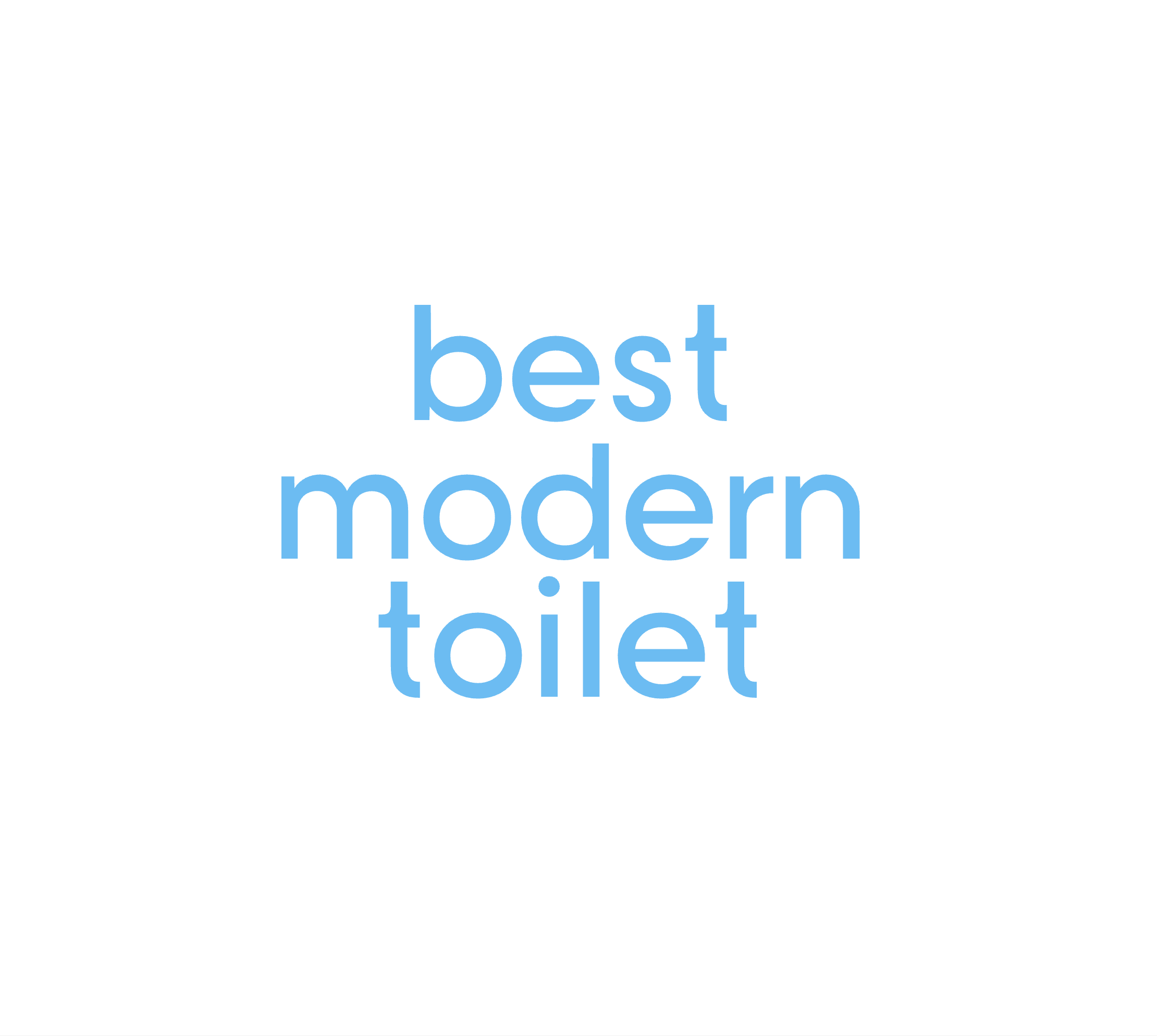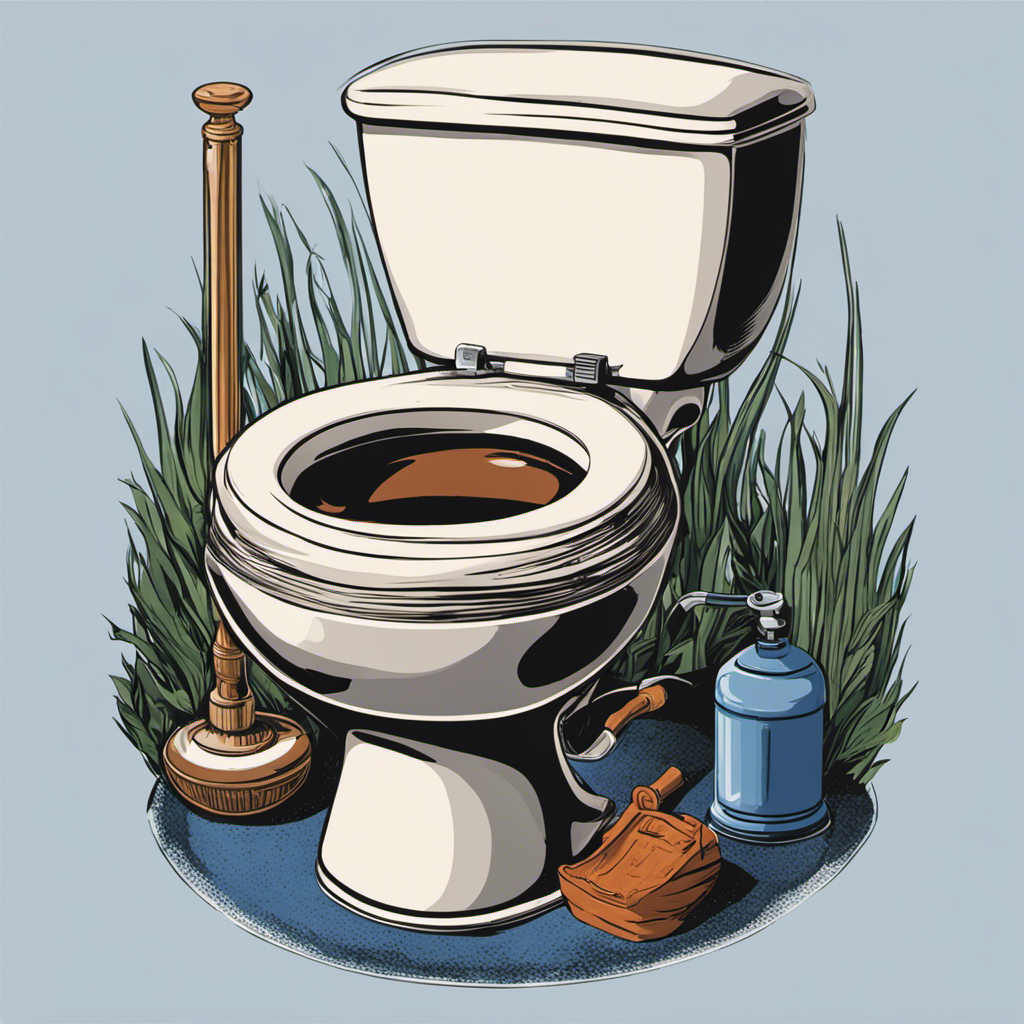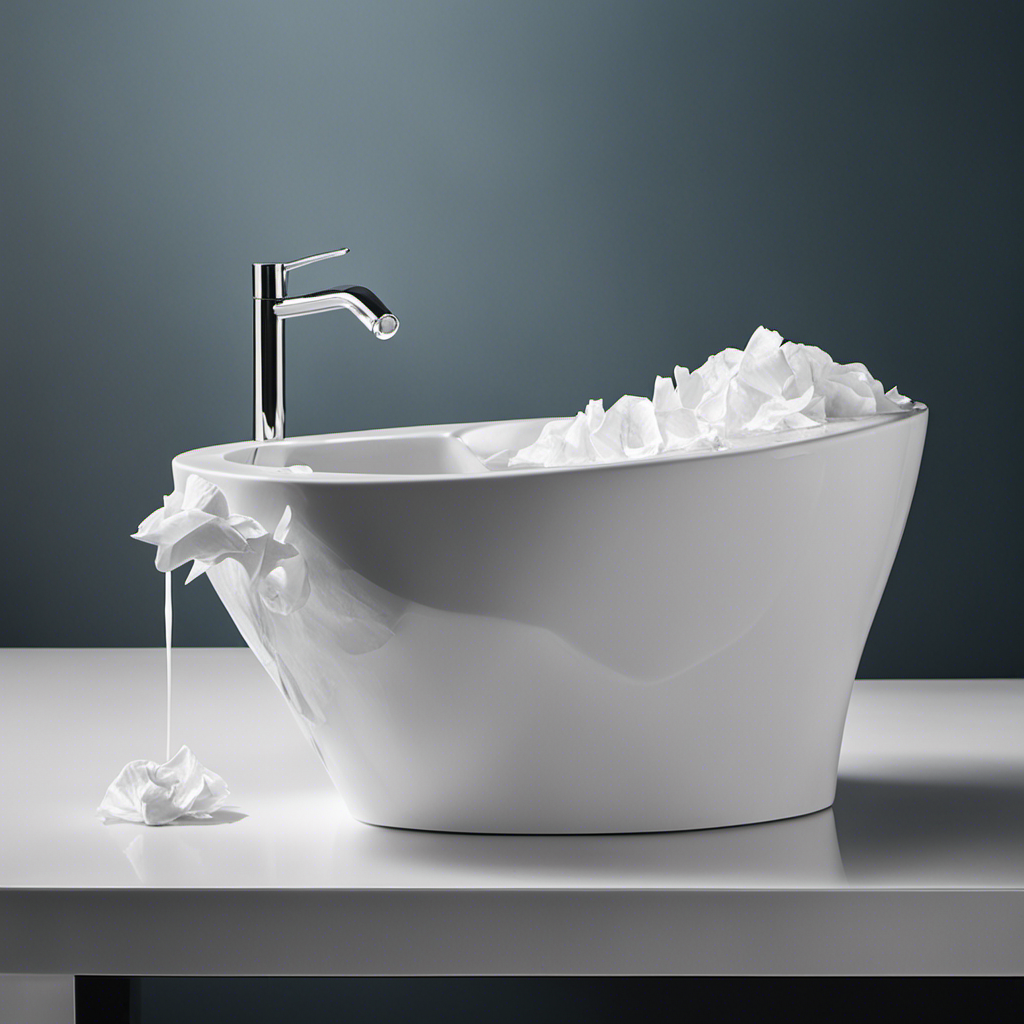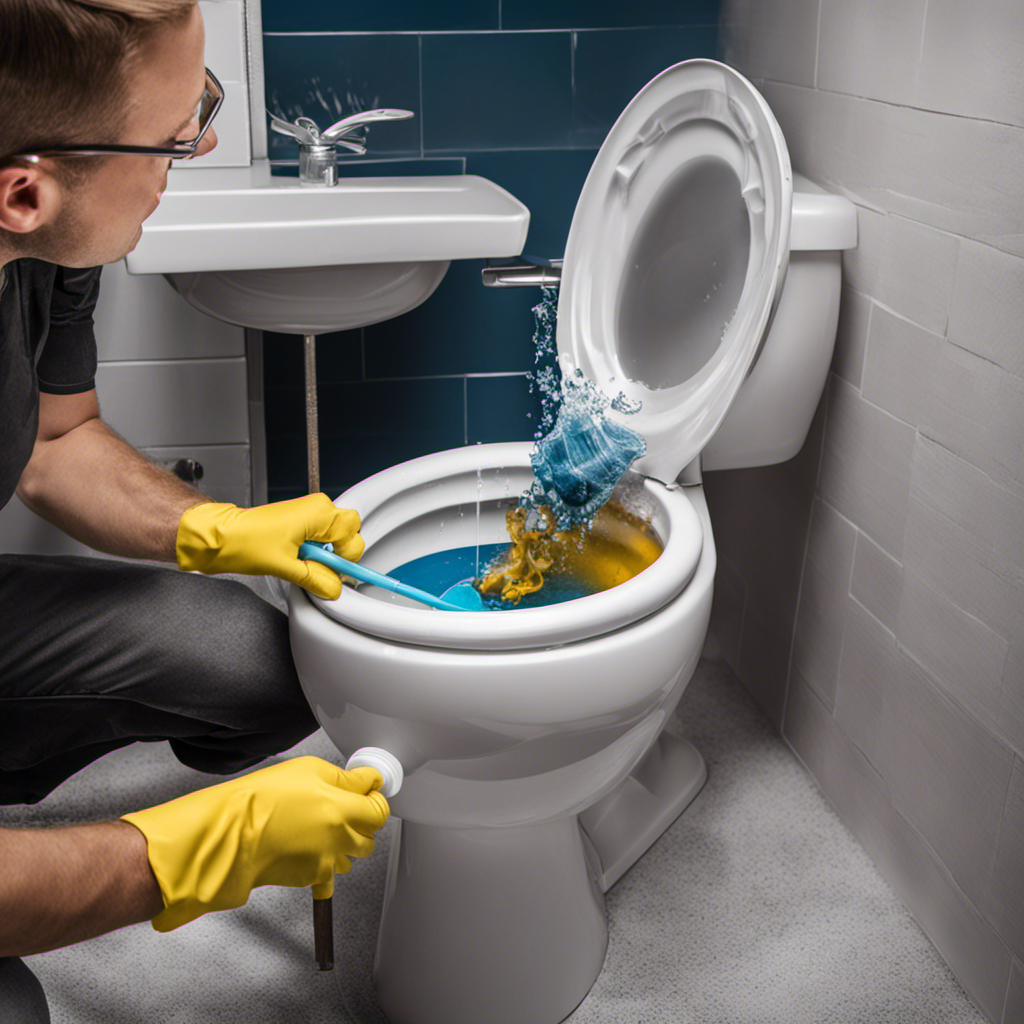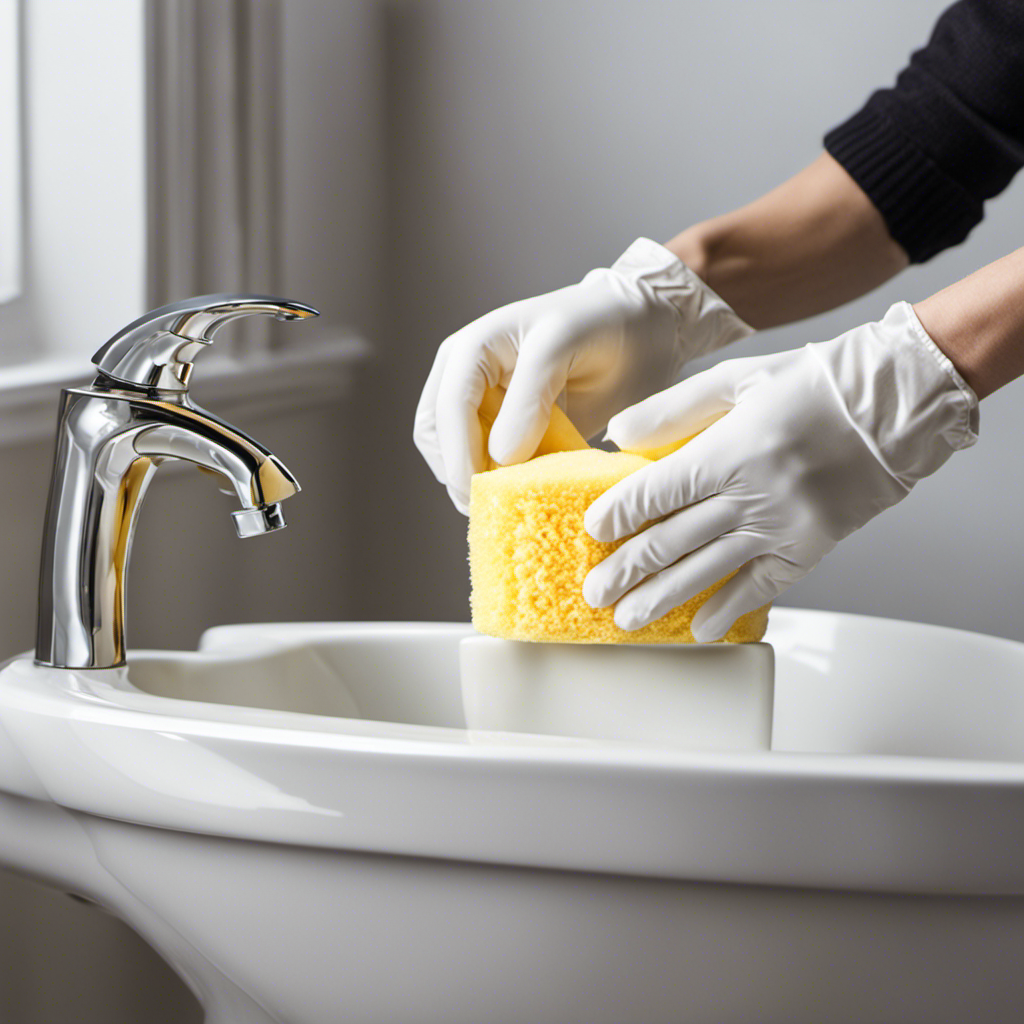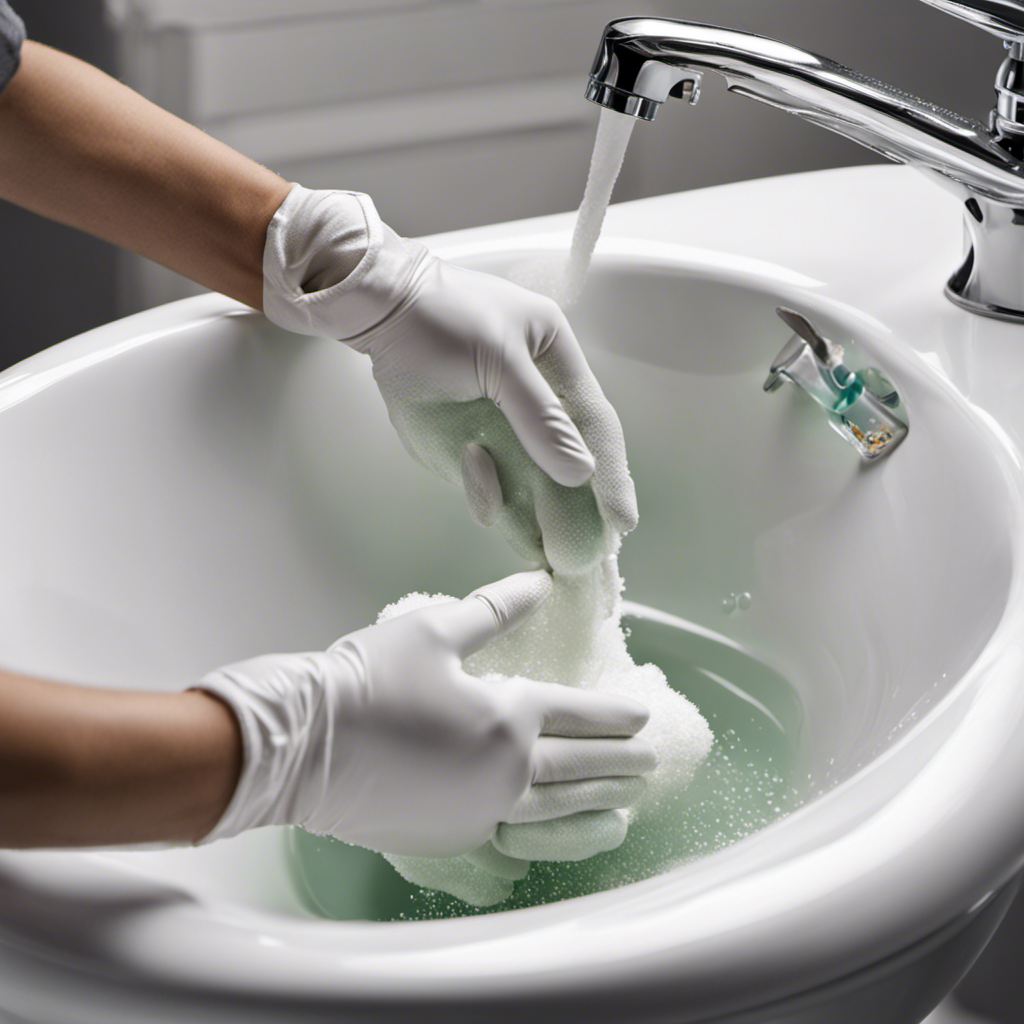Bathtub
What Is a Standard Bathtub Size

Are you tired of squeezing into a cramped bathtub that barely fits your body? Well, fret no more! In this article, we will dive into the fascinating world of standard bathtub sizes.
Discover the average dimensions, common sizes, and standard measurements that will help you make an informed decision when choosing your next bathtub.
So, get ready to soak in comfort and luxury as we explore the world of standard bathtub sizes.
Key Takeaways
- Standard bathtubs range in size from 60 to 72 inches long, 30 to 32 inches wide, and 14 to 24 inches deep.
- It is important to consider specific needs and preferences when choosing a bathtub size, and it is recommended to measure the bathroom space and consult with a professional.
- Small tubs are suitable for smaller bathrooms or a more cozy bathing experience, while large tubs offer a more spacious bathing experience and can accommodate more than one person.
- Custom bathtub sizes allow for a unique and personalized bathing experience, with options to create small and cozy tubs or spacious soaking tubs.
Average Dimensions of Standard Bathtubs
The average dimensions of standard bathtubs vary depending on the style and manufacturer. Common bathtub sizes range from 60 inches long and 30 inches wide to 72 inches long and 42 inches wide.
These dimensions are suitable for most bathrooms and can comfortably accommodate an average-sized adult. However, it’s important to consider your specific needs and preferences when choosing a bathtub size.
If you enjoy a more spacious bathing experience or have a larger build, you may want to opt for a larger bathtub. On the other hand, if you have a smaller bathroom or prefer a more compact tub, a smaller size may be more suitable.
Ultimately, it is recommended to measure your bathroom space and consult with a professional to determine the best bathtub size for your specific needs.
Common Sizes of Bathtubs
When it comes to choosing a bathtub, it’s important to consider the average dimensions, as well as the different sizes available.
Standard bathtubs typically range from 60 to 72 inches in length, 30 to 32 inches in width, and 14 to 24 inches in depth.
However, if you have a smaller bathroom or prefer a more cozy bathing experience, you may opt for a small tub, while those with larger spaces might prefer a larger, more luxurious bathtub.
Additionally, for those who want a truly customized bathing experience, there are also options for custom bathtub sizes, allowing you to create a tub that perfectly fits your needs and preferences.
Average Bathtub Dimensions
Want to know the average size of a standard bathtub? When it comes to bathtub dimensions, there are a few factors to consider. The average bathtub capacity typically ranges from 40 to 80 gallons, depending on the size and shape of the tub. It’s important to take into account the available space in your bathroom and your personal preferences when choosing the right bathtub size. To help you visualize the different options, here is a comparison table showcasing various standard bathtub sizes:
| Bathtub Size | Length (inches) | Width (inches) |
|---|---|---|
| Small | 54-60 | 30-32 |
| Standard | 60-72 | 30-32 |
| Large | 72-84 | 36-42 |
| Extra Large | 84-96 | 42-50 |
| Corner | 60-72 | 60-72 |
Choosing the right bathtub size is crucial to ensure comfort and functionality. Now that you have an idea of the average bathtub dimensions, let’s explore the differences between small and large tubs.
Small Vs. Large Tubs
To make the best choice for your bathroom, consider the differences between small and large tubs.
Small tubs are typically designed to fit into compact spaces, making them ideal for bathrooms with limited square footage. They are perfect for those who want to save space while still enjoying the luxury of a bathtub.
On the other hand, large tubs offer a more spacious bathing experience. They are perfect for those who enjoy soaking and want a tub that can accommodate more than one person. Large tubs also provide a sense of luxury and relaxation.
Now that you understand the differences between small and large tubs, let’s explore the world of custom bathtub sizes.
Custom Bathtub Sizes
If you have specific dimensions in mind for your bathroom, you may consider exploring custom options for your tub.
Custom bathtub designs allow you to create a unique and personalized bathing experience.
With custom options, you have the freedom to choose from a variety of shapes and sizes that best fit your needs and preferences.
Want a round tub? No problem. Prefer an oval or hexagonal shape? You got it.
Custom designs also offer flexibility in terms of depth and width, allowing you to create a bathtub that perfectly suits your comfort level.
Whether you want a small and cozy tub or a spacious soaking tub, custom options can cater to your desires.
Standard Bathtub Measurements
The standard bathtub size in most homes is around 60 inches in length. This allows for a comfortable bathing experience while also fitting within the average bathroom dimensions. However, it’s important to note that there are variations in width and depth depending on the specific bathtub model. On average, a standard bathtub can hold about 40 to 60 gallons of water, depending on its size and shape.
When it comes to material options for bathtubs, there are several choices available. The most common materials used include acrylic, fiberglass, cast iron, and porcelain-enameled steel. Each material has its own advantages and disadvantages, so it’s important to consider factors such as durability, maintenance, and cost when selecting a bathtub material. Here is a table summarizing the pros and cons of each material option:
| Material | Pros | Cons |
|---|---|---|
| Acrylic | Lightweight, easy to clean | Susceptible to scratches |
| Fiberglass | Affordable, easy to install | Less durable than other options |
| Cast Iron | Durable, retains heat well | Heavy, expensive |
| Porcelain-enameled | Stain-resistant, easy to clean | Prone to chips and cracks |
Overall, when choosing a bathtub, it’s important to consider not only the size but also the material that best suits your needs and preferences.
Typical Dimensions for Residential Bathtubs
When it comes to choosing a bathtub for your bathroom, it’s important to consider the optimal size that will best fit your needs. You’ll want to make sure it’s not too small or too big, but just right for a comfortable and relaxing bathing experience.
Additionally, there are space-saving options available that can help maximize the use of your bathroom area, as well as customization possibilities to cater to your personal preferences and design aesthetic.
Optimal Bathtub Size
An optimal bathtub size typically depends on your individual preferences and the available space in your bathroom. When considering the size of your bathtub, it is important to take into account the optimal water depth for your comfort and relaxation. Most people find a water depth of around 14 to 17 inches to be ideal for a satisfying soak.
Additionally, you should consider the bathtub installation requirements, such as the necessary plumbing and structural support. It is crucial to ensure that your bathroom can accommodate the size and weight of the bathtub you choose.
Once you have determined the optimal size for your bathtub, you can explore various space-saving options that are designed to fit smaller bathroom layouts without compromising on comfort and functionality.
Space-Saving Options
If you’re looking to save space in your bathroom, there are several space-saving designs and compact tub options available. Here are three options to consider:
-
Corner Tubs: These tubs are designed to fit snugly into the corner of your bathroom, making efficient use of space. They come in various sizes and shapes, allowing you to choose one that best fits your needs.
-
Freestanding Tubs: These tubs don’t require any installation against a wall, offering more flexibility in terms of placement. They can be placed in the center of the bathroom or against a wall, depending on the available space.
-
Walk-in Tubs: These tubs are specifically designed for individuals with mobility issues. They have a door that allows for easy access, eliminating the need to step over the side of the tub. They are compact in size and can fit into smaller bathrooms.
Customization Possibilities
There’s a wide range of customization possibilities available for your bathroom, allowing you to create a unique and personalized space. When it comes to choosing a bathtub, you have plenty of options to consider. From freestanding options to corner tubs, you can find the perfect style and size to fit your needs. To help you visualize the variety of choices, here’s a table showcasing different types of bathtubs:
| Type | Style | Size |
|---|---|---|
| Freestanding | Clawfoot | 60" x 30" |
| Modern | 68" x 34" | |
| Corner | Triangle | 48" x 48" |
| Oval | 60" x 60" |
These are just a few examples, but there are many more options available. Now that you have an idea of the different customization possibilities, let’s move on to exploring standard tub sizes for bathroom renovations.
Standard Tub Sizes for Bathroom Renovations
The most common standard bathtub size for bathroom renovations is around 60 inches in length. This size allows for a comfortable bathing experience while also fitting into most average-sized bathrooms. However, it’s important to note that there are several other standard bathtub sizes available in the market.
Here are three popular bathtub size options for bathroom renovations:
-
54 inches: This smaller size is perfect for bathrooms with limited space. It provides a cozy bathing experience while still allowing for maneuverability in the bathroom.
-
66 inches: For those who prefer a more spacious bathing area, a 66-inch bathtub offers extra room to stretch out and relax. This size is ideal for individuals who enjoy longer baths or have mobility concerns.
-
72 inches: If you have a larger bathroom and want a luxurious bathing experience, a 72-inch bathtub is the way to go. This size provides ample space for two people to comfortably bathe together or for individuals who prefer a more spacious bathing area.
When it comes to choosing the right bathtub size for your bathroom renovation, consider the dimensions of your space, your personal preferences, and any specific requirements you may have.
Now, let’s move on to discussing popular bathtub sizes for new construction.
Popular Bathtub Sizes for New Construction
One popular option for new construction is a bathtub that measures 72 inches in length, providing a luxurious bathing experience.
When it comes to choosing a bathtub, there are a variety of sizes to consider. The most common bathtub sizes range from 60 inches to 72 inches in length. A larger bathtub, like the 72-inch option, offers more space and comfort for soaking and relaxation. However, it’s important to note that larger bathtubs require more water to fill and may take longer to heat.
Additionally, the material of the bathtub can also impact its functionality and durability. Popular bathtub materials include acrylic, fiberglass, and cast iron. Each material has its own pros and cons, so it’s important to consider your specific needs and preferences when selecting a bathtub size and material for your new construction project.
Sizing Considerations for Choosing a Bathtub
When choosing a bathtub for new construction, it’s important to consider the sizing options available. Here are some key considerations to keep in mind:
-
Bathtub Material Options: There are various materials to choose from when it comes to bathtubs. Each material has its own unique qualities and benefits. Some popular options include acrylic, fiberglass, cast iron, and porcelain-enameled steel. Consider factors such as durability, maintenance, and aesthetics when selecting the material that best suits your needs.
-
Bathtub Installation Considerations: Before making a decision, it’s crucial to consider the installation requirements. Determine if the bathtub will fit through doorways and hallways, and if it can be easily maneuvered into the desired location. Additionally, consider the weight of the bathtub and whether the floor can support it. It’s also important to think about plumbing connections and any necessary modifications.
-
Space and Usage: Take into account the size of the bathroom and how the bathtub will fit within the available space. Consider who will be using the bathtub and their specific needs. For example, if you have children or elderly family members, you may want to choose a bathtub with safety features like grab bars or non-slip surfaces.
Frequently Asked Questions
How Do I Measure My Existing Bathtub to Determine Its Size?
To measure your existing bathtub accurately, follow these steps: 1) Measure the length, width, and depth using a tape measure. 2) Note any irregularities or protrusions. These measurements will ensure a smooth bathtub installation process.
Are There Any Regulations or Building Codes That Dictate the Minimum Size for a Bathtub?
Building regulations dictate the minimum size for a bathtub, ensuring safety and comfort. When considering bathtub size standards, it’s important to consult local building codes to ensure compliance and create a relaxing oasis in your bathroom.
Can I Install a Larger or Smaller Bathtub Than the Standard Sizes Mentioned in the Article?
You can install an oversized bathtub if you have the space, but consider the pros and cons. Smaller bathtubs can save space, but may not be as comfortable. It’s important to consider your needs and the available space before making a decision.
What Are the Dimensions of Corner Bathtubs and How Do They Compare to Standard Bathtubs?
Corner bathtubs have unique dimensions that allow them to fit snugly in the corner of a bathroom. Compared to standard bathtubs, they can be smaller in overall size but offer a deeper soak. The pros include space-saving design, while the cons may include limited legroom.
Are There Any Specific Considerations for Choosing a Bathtub Size for a Small Bathroom?
When choosing a bathtub size for a small bathroom, it’s important to consider space-saving options and maximize functionality. Look for compact tubs that fit your dimensions and provide the comfort you deserve.
Conclusion
So now you know all about the standard sizes of bathtubs! With this information, you can confidently choose the perfect bathtub for your bathroom renovation or new construction project.
Whether you prefer a cozy soaking tub or a spacious whirlpool, there’s a standard size that will meet your needs. So why settle for a cramped or oversized bathtub when you can have the perfect fit?
Isn’t it time to transform your bathroom into a luxurious oasis?
Liam’s journey with us started as a consumer. Having faced challenges while setting up his own modern bathroom, he delved deep into research.
Recognizing his knack for simplifying complex information and his authentic writing style, we were thrilled to welcome him aboard. Liam’s articles often merge practicality with style, ensuring readers find the perfect fit for their homes. Liam is an avid hiker off-duty and often jokes about finding the best “natural toilets” Mother Earth has to offer.
Bathtub
Can You Flush Toilet Paper in Crete Greece

Have you ever been to Crete, Greece and wondered about the toilet paper disposal situation? We have all the information you need!
In this article, we’ll dive into the plumbing system in Crete and explore the do’s and don’ts of toilet paper disposal. We’ll also discuss the environmental impact of flushing toilet paper and provide some alternative options.
So, grab a seat and get ready to learn all about the best ways to handle your toilet paper experience in Crete. Let’s get started!
Key Takeaways
- The plumbing system in Crete operates efficiently, but specific regulations are in place for toilet paper disposal.
- Flushing toilet paper can cause plumbing issues and may not be suitable for older infrastructure.
- Toilet paper should be placed in a separate bin in Crete, and plastic bags are commonly used to line the bins for easy disposal.
- Flushing toilet paper has significant environmental consequences, including clogged pipes, water pollution, and negative impacts on forests and ecosystems.
Plumbing System in Crete
The plumbing system in Crete, Greece, operates efficiently, allowing us to flush toilet paper without any concerns. In Greece, there are specific plumbing regulations in place that dictate the standards for the country’s plumbing infrastructure. These regulations ensure that the plumbing system can handle the disposal of toilet paper without any issues.

However, it’s important to note that there are cultural differences in toilet paper usage in Greece compared to other countries. While it’s common practice in many places to dispose of toilet paper in the toilet, in Greece it’s often recommended to dispose of it in a separate bin provided in the bathroom. This cultural difference is due to the older infrastructure in some parts of Greece, which may not be able to handle large amounts of toilet paper.
Transitioning into the subsequent section about ‘toilet paper disposal in Crete’, let’s explore the proper methods for disposing of toilet paper in this region.
Toilet Paper Disposal in Crete
We can dispose of toilet paper in Crete, Greece, by placing it in a separate bin provided in the bathroom. It’s a common practice in Crete to not flush toilet paper down the toilet due to the plumbing system’s sensitivity. Instead, you’ll find small bins specifically designated for toilet paper disposal in most bathrooms. These bins are usually lined with plastic bags for easy disposal.
It’s important to adhere to this local custom to avoid any plumbing issues. While it may seem unusual for some visitors, it’s a necessary step to ensure the proper functioning of the plumbing system. By disposing of toilet paper in these bins, we can minimize the risk of clogs and maintain the overall cleanliness and hygiene of the bathroom facilities.

Now that we know how to dispose of toilet paper correctly, let’s delve into the environmental impact of flushing toilet paper.
Environmental Impact of Flushing Toilet Paper
As we consider the environmental impact of flushing toilet paper in Crete, Greece, it’s important to recognize the significant amount of waste that can accumulate in the plumbing system. Flushing toilet paper can have a detrimental impact on sewage systems, as the paper can clog pipes and cause blockages. This not only leads to costly repairs, but also contributes to the pollution of our waterways.
Additionally, the sustainability of toilet paper production is a concern. The production of toilet paper requires the cutting down of trees and the use of chemicals, which can have a negative impact on our forests and ecosystems.
Considering these environmental consequences, it’s crucial to explore alternatives to flushing toilet paper in Crete.

Alternatives to Flushing Toilet Paper in Crete
Toilet paper alternatives in Crete include bidets, which can be a more sustainable option for personal hygiene. In addition to bidets, there are several other cultural practices and alternatives to flushing toilet paper in Crete that you may find interesting:
- Water containers: Many households in Crete have water containers next to the toilet. After using the toilet, instead of using toilet paper, you can pour water from the container to clean yourself.
- Handheld bidet sprayers: These devices are similar to a shower head attached to a hose. With a simple press of a button, you can direct a stream of water for cleaning purposes.
- Wet wipes: While not as sustainable as the previous options, wet wipes are commonly used as an alternative to toilet paper in Crete. However, it’s important to dispose of them properly to prevent clogging the plumbing system.
Tips for a Smooth Toilet Paper Experience in Crete
To ensure a smooth toilet paper experience in Crete, it’s advisable to stock up on an ample supply of toilet paper before your trip. While there are toilet paper brands available in Crete, it’s always better to be prepared, especially if you have specific preferences.
Some popular toilet paper brands in Crete include Papernet, Softline, and Katrin. These brands offer a range of options, from standard to extra soft, ensuring comfort during your bathroom visits.
Additionally, it’s important to adhere to proper public restroom etiquette in Crete. Always remember to flush the toilet paper in the provided bins, as the plumbing systems in Crete may not be able to handle flushing it down the toilet.

Frequently Asked Questions
What Is the Average Cost of Plumbing Services in Crete?
The average cost of plumbing services in Crete can vary depending on the specific needs of the project. It is best to contact local plumbing companies for accurate pricing information.
Can I Flush Wet Wipes Down the Toilet in Crete?
Yes, we can flush wet wipes down the toilet in Crete, Greece. However, it is important to note that only flushable wipes should be used. Alternatively, there are other toilet paper options available.
Are Bidets Commonly Found in Crete Homes?
Bidets, a common fixture in European bathrooms, offer a different approach to personal hygiene. In some countries, like Crete, they are commonly found in homes. Cultural differences in bathroom habits make bidets a popular choice.
Is It Safe to Flush Feminine Hygiene Products in Crete?
Yes, it is safe to flush feminine hygiene products in Crete. However, it is important to consider the disposal methods and the environmental impact of flushing these products.

Are There Any Specific Regulations or Restrictions on Toilet Paper Usage in Crete?
In Crete, Greece, there are no specific regulations or restrictions on toilet paper usage. However, it’s worth considering toilet paper alternatives like bidets or wet wipes to minimize the environmental impact of toilet paper usage.
Conclusion
In conclusion, when visiting Crete, it’s important to remember that the plumbing system may not be able to handle flushing toilet paper. Instead, it’s recommended to dispose of it in the provided waste bin.
This practice not only prevents clogs and damage to the plumbing, but also helps protect the beautiful environment of Crete.
So, let’s take the plunge and adapt to this unique aspect of Crete’s toilet etiquette, ensuring a smooth and sustainable experience for all.

With an impeccable eye for detail and a passion for bathroom-related, Ava leads our editorial team gracefully and precisely.
Under her guidance, Best Modern Toilet has flourished as the go-to resource for modern bathroom enthusiasts. In her free time, you might find Ava exploring antique shops and looking for vintage bathroom fixtures to add to her collection.
Bathtub
Can You Flush a Toilet Without the Lid on

Oh, it’s incredible how we often overlook the little things! It’s astonishing to think about the significant impact that something as basic as flushing a toilet can have on our health and the environment.
In this article, we delve into the importance of flushing with the lid on. We’ll explore the potential health risks of flushing without the lid, how it protects your bathroom, and the environmental consequences.
So, buckle up and get ready to master the art of proper toilet etiquette.
Key Takeaways
- Flushing with the lid on prevents the release of bacteria and viruses into the air.
- Flushing without the lid increases the risk of airborne transmission of pathogens.
- Closing the lid before flushing helps maintain a fresh and clean environment.
- Flushing without the lid can lead to increased water wastage and higher utility bills.
The Importance of Flushing With the Lid on
To maximize hygiene and minimize the spread of germs, it’s essential to always flush the toilet with the lid on.

There are several advantages to this practice. First and foremost, closing the lid prevents the release of a plume of bacteria and viruses into the air. When the toilet is flushed without the lid, these microorganisms can reach surfaces in the bathroom, increasing the risk of contamination.
Additionally, keeping the lid closed helps contain odors, maintaining a more pleasant environment.
However, there are also a few disadvantages to consider. Closing the lid requires an extra step and may inconvenience some individuals. Furthermore, if the lid isn’t properly cleaned, it can become a breeding ground for bacteria.
Therefore, while there are some drawbacks, the advantages of flushing with the lid on far outweigh them in terms of hygiene and preventing the spread of germs.

Potential Health Risks of Flushing Without the Lid
Flushing the toilet without the lid poses potential health risks. Here are four reasons why:
- Potential Contamination: When you flush without the lid, tiny water droplets containing bacteria and other microorganisms can be propelled into the air. These droplets can then settle on surfaces in your bathroom, potentially leading to contamination.
- Spread of Bacteria: Flushing without the lid allows bacteria to spread throughout your bathroom. Bacteria from fecal matter can become airborne and settle on items such as toothbrushes, towels, or even your hands, increasing the risk of illness.
- Increased Aerosolization: The force of the flush can cause a higher level of aerosolization, resulting in a greater dispersion of potentially harmful particles. This can be especially concerning if someone in your household is already sick.
- Potential for Airborne Transmission: Certain bacteria and viruses can survive in the air for extended periods. Flushing without the lid increases the chances of these pathogens becoming airborne, leading to potential respiratory infections.
How Flushing With the Lid on Protects Your Bathroom
By keeping the lid on when we flush, we can effectively protect our bathroom from potential contamination and the spread of bacteria.
The benefits of using a toilet lid are numerous. Firstly, it prevents the release of harmful bacteria and viruses into the air. When we flush without the lid, microscopic particles containing fecal matter and urine are dispersed, settling on surfaces and increasing the risk of contamination.
Secondly, the lid creates a barrier that prevents odors from escaping, maintaining a fresh and clean bathroom environment.

Additionally, using the toilet lid reduces the amount of water that splashes out during flushing, minimizing the need for frequent cleaning.
Alternatives to flushing without the lid include closing the lid before flushing or using a bidet, which eliminates the need for flushing altogether.
Environmental Impact of Flushing Without the Lid
Using the toilet without the lid can have negative environmental impacts, especially in terms of water wastage and energy consumption. Here are four reasons why flushing without the lid can be detrimental to the environment:
- Water Conservation: When the lid is left off, water can easily evaporate, leading to unnecessary water loss. This not only wastes a precious resource but also increases the demand on water treatment facilities.
- Sanitation Standards: Flushing without the lid can result in the spread of harmful bacteria and pathogens. The lid acts as a barrier, preventing these microorganisms from escaping into the air and potentially contaminating surfaces in the bathroom.
- Energy Consumption: Without the lid, air can freely circulate in the toilet bowl, causing the water to evaporate more quickly. As a result, the toilet tank needs to refill more frequently, increasing energy usage and contributing to higher utility bills.
- Odor Control: The lid plays a crucial role in containing unpleasant odors. By leaving it off, foul smells can permeate the bathroom, leading to discomfort and the need for additional air fresheners, which can have their own environmental impact.
Tips for Proper Toilet Etiquette
To ensure proper toilet etiquette, we should always remember to close the lid before leaving the bathroom. This simple act not only keeps the bathroom clean and tidy, but also prevents the spread of germs and bacteria. Etiquette reminders can help maintain a hygienic environment for everyone.

Firstly, it’s important to flush the toilet after every use to remove waste and eliminate any unpleasant odors. Additionally, it’s courteous to use toilet paper sparingly and to properly dispose of it in the provided receptacle.
Furthermore, washing hands thoroughly with soap and water is essential to maintain good hygiene. Lastly, it’s considerate to replenish toilet paper and hand soap if necessary, ensuring the next person has a pleasant experience.
Following these etiquette reminders promotes bathroom cleanliness and a positive experience for all.
Frequently Asked Questions
Can Flushing a Toilet Without the Lid on Cause Damage to the Plumbing System?
Flushing a toilet without the lid on can potentially cause plumbing damage and pose health risks. It is important to keep the lid on to prevent objects from falling in, reduce odors, and minimize the spread of bacteria and germs.

Is It True That Flushing Without the Lid Can Lead to the Spread of Bacteria and Germs?
Yes, flushing without the lid can lead to the spread of bacteria and germs. To prevent this, it is important to always flush with the lid down and practice proper sanitation methods.
What Are the Potential Health Risks Associated With Flushing Without the Lid?
Potential contamination and bacterial transmission are the main health risks associated with flushing without the lid. Without the lid, droplets containing bacteria and germs can be propelled into the air, increasing the chances of spreading illness.
How Does Flushing With the Lid on Protect the Bathroom From Unpleasant Odors?
Flushing without the lid can lead to unpleasant bathroom odors. The lid acts as a barrier, preventing the release of odorous gases into the air. It’s important to keep the lid on to maintain a fresh and odor-free bathroom environment.
Are There Any Environmental Consequences of Flushing Without the Lid?
There are environmental consequences to flushing without the lid on. It can lead to the release of unpleasant odors, which negatively impact air quality. Additionally, it can result in water wastage, reducing our efforts for water conservation.

Conclusion
In conclusion, it’s crucial to always flush the toilet with the lid on to maintain proper hygiene and protect our health. Flushing without the lid can lead to the spread of harmful bacteria and viruses, posing potential health risks.
Additionally, keeping the lid closed helps prevent any unwanted odors from escaping and maintains a clean and pleasant bathroom environment.
Let’s remember to practice proper toilet etiquette by always flushing with the lid securely in place.
With an impeccable eye for detail and a passion for bathroom-related, Ava leads our editorial team gracefully and precisely.
Under her guidance, Best Modern Toilet has flourished as the go-to resource for modern bathroom enthusiasts. In her free time, you might find Ava exploring antique shops and looking for vintage bathroom fixtures to add to her collection.
Bathtub
What Happens if You Flush Tissues Down the Toilet

Are you aware that flushing tissues down the toilet can cause major issues with your plumbing system? It can result in clogs, blockages, and even sewer backups.
Not only is this inconvenient, but it can also have environmental consequences.
In this article, we will explore the impact of flushing tissues and provide you with proper disposal alternatives.
So, let’s dive in and learn how to keep our plumbing systems running smoothly and protect the environment at the same time.

Key Takeaways
- Flushing tissues can cause clogs, blockages, and sewer backups, leading to costly repairs and potential damage to plumbing systems.
- Sewer backups resulting from flushing tissues can contaminate water sources, expose individuals to disease-causing pathogens, and cause infrastructure damage.
- Flushing tissues contributes to water pollution and ecosystem disruption, harming aquatic organisms and impacting biodiversity.
- Proper disposal alternatives, such as recycling or using biodegradable tissues, are crucial to mitigate the environmental consequences of flushing tissues.
The Impact on Your Plumbing System
The improper disposal of tissues by flushing them down the toilet can have detrimental effects on our plumbing system. When tissues are flushed, they can easily clog the pipes, leading to water damage and costly repairs.
Tissues are designed to be absorbent, and when they come into contact with water, they expand and become mushy. This makes them more likely to get stuck in the narrow pipes, causing blockages.
The accumulation of tissues in the plumbing system can also lead to reduced water flow, which can further damage the pipes and create a breeding ground for bacteria and mold.
To avoid these issues, it’s important to dispose of tissues properly in the trash, rather than flushing them down the toilet.

Potential Clogs and Blockages
When we flush tissues down the toilet, it can potentially cause clogs and blockages in the plumbing system. This is because tissues aren’t designed to break down easily in water like toilet paper. Here are some potential consequences of flushing tissues:
- Increased risk of clogs: Tissues can accumulate in pipes and create blockages, leading to slow drains or complete backups.
- Expensive repairs: Clearing clogs caused by tissues may require professional help and can be costly.
- Impact on septic systems: Flushing tissues can overload septic tanks, disrupting the natural breakdown of waste and potentially leading to system failure.
- Environmental impact: Tissues that end up in wastewater treatment plants can strain the system and increase the likelihood of pollution.
To avoid these problems, it’s important to stick to using toilet paper or explore eco-friendly toilet paper alternatives that are designed to dissolve easily and not cause plumbing issues.
Risks of Sewer Backups
Our studies have shown that flushing a significant amount of tissues down the toilet can greatly increase the likelihood of experiencing sewer backups. Not only can this lead to potential clogs and blockages, but it also poses risks of contamination and health hazards. When sewers become backed up, the waste can overflow and contaminate both public and private properties. This can result in the spread of harmful bacteria and viruses, putting individuals at risk of developing various illnesses. To illustrate the severity of these risks, consider the following table:
| Risks of Sewer Backups |
|---|
| Contamination of water sources |
| Exposure to disease-causing pathogens |
| Damage to infrastructure |
| Expensive cleanup and repairs |
As you can see, the consequences of sewer backups extend beyond inconvenience and can have significant health and financial implications. Now, let’s explore the environmental consequences of flushing tissues down the toilet.

Environmental Consequences
Flushing a significant amount of tissues down the toilet can have detrimental environmental consequences, specifically in terms of water pollution and ecosystem disruption.
When tissues are flushed, they can end up in our marine environments, contributing to marine pollution. This pollution can have severe consequences on marine life, including fish, turtles, and other marine animals, as they may mistake the tissues for food and consume them.
Moreover, the decomposition of tissues in water can lead to water contamination, affecting the overall water quality and potentially harming aquatic organisms.
Additionally, the accumulation of tissues in water bodies can disrupt the balance of ecosystems, impacting the biodiversity and ecological function.

To mitigate these environmental consequences, it’s crucial to explore proper disposal alternatives that ensure the tissues are disposed of in an environmentally responsible manner.
Proper Disposal Alternatives
To address the environmental consequences mentioned earlier, we need to explore proper disposal alternatives for tissues.
One option is to consider recycling options for tissues. While tissues are typically made from mixed fibers, some recycling facilities do accept them. However, it’s important to note that the recycling process for tissues can be challenging due to their low quality and potential contamination.
Another alternative is to use biodegradable tissues. These tissues are made from materials that break down naturally over time, reducing their impact on the environment. Biodegradable tissues are often made from plant-based materials such as bamboo or sugarcane.

Frequently Asked Questions
Can Flushing Tissues Down the Toilet Lead to a Sewage Backup in My Home?
Flushing tissues down the toilet can cause a sewage backup in our home. It’s important to consider toilet paper alternatives to avoid this issue. Additionally, flushing tissues has a negative environmental impact, clogging pipes and contributing to water pollution.
Are There Any Biodegradable Tissue Options That Are Safe to Flush?
Compostable tissue options exist, but flushing tissues down the toilet still has an environmental impact. While some tissues may break down in the sewage system, others can clog pipes and contribute to sewage backups.
What Should I Do if My Toilet Becomes Clogged Due to Flushing Tissues?
If our toilet becomes clogged due to flushing tissues, there are various toilet unclogging methods we can try, such as using a plunger or a toilet auger. If these methods fail, it may be necessary to seek professional plumbing assistance.
Is It Safe to Flush Tissues in Septic Tank Systems?
Flushing tissues down the toilet is not safe for septic tank systems. It can cause clogs and damage to the system. It’s important to use alternative disposal methods to avoid environmental impact and maintain the septic tank’s functionality.

Can Flushing Tissues Down the Toilet Contribute to Water Pollution?
Flushing tissues down the toilet can have potential health risks and contribute to water pollution. By polluting our water sources, we jeopardize the environment and our well-being. Proper disposal methods are crucial.
Conclusion
In conclusion, flushing tissues down the toilet can have serious consequences for your plumbing system, including potential clogs, blockages, and even sewer backups. Not only can it cause inconvenience and costly repairs, but it also has environmental implications.
It’s crucial to dispose of tissues properly by using alternative methods, such as throwing them in the trash. Remember, taking the time to properly dispose of tissues can save you from a messy and expensive situation down the line.
With an impeccable eye for detail and a passion for bathroom-related, Ava leads our editorial team gracefully and precisely.
Under her guidance, Best Modern Toilet has flourished as the go-to resource for modern bathroom enthusiasts. In her free time, you might find Ava exploring antique shops and looking for vintage bathroom fixtures to add to her collection.
-

 Bathroom Enhancements2 months ago
Bathroom Enhancements2 months agoWill Hot Bath Lower Blood Pressure
-

 FAQ - Advanced Bathroom Queries3 months ago
FAQ - Advanced Bathroom Queries3 months agoWhich Countries Use Bidets the Most
-
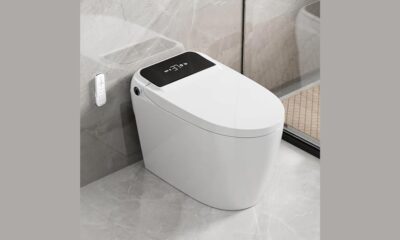
 Reviews1 month ago
Reviews1 month agoLDian Smart Toilet Review [2024]
-
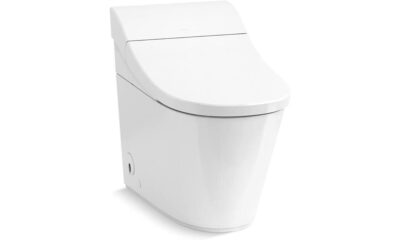
 Reviews2 months ago
Reviews2 months agoKohler Innate Smart Toilet Review [2024]
-
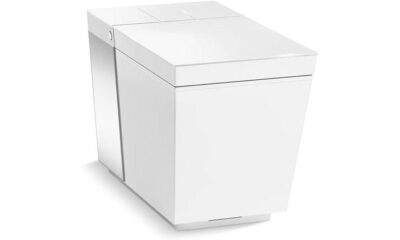
 Reviews2 months ago
Reviews2 months agoKohler NUMI 2.0 Smart Toilet Review [2024]
-
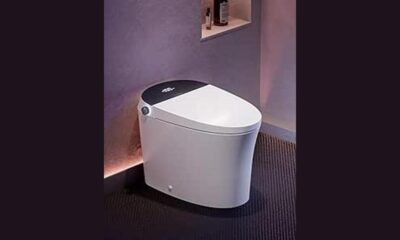
 Reviews2 months ago
Reviews2 months agoCANEST Smart Toilet Review: The Ultimate Bathroom Upgrade [2024]
-

 Toilet Types3 months ago
Toilet Types3 months agoAre Bleach Tablets Bad for Your Toilet
-
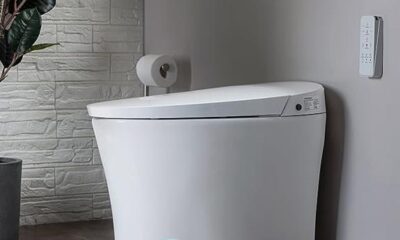
 Reviews2 months ago
Reviews2 months agoWoodbridge B0970S Smart Bidet Toilet Review [2024]
